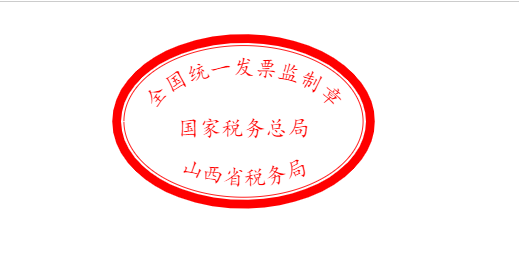废话不多说,代码如下:
<template>
<div>
<div class="mod-e-invoice">
<div class="invoice-content">
<!-- 电子发票章 -->
<div class="invoice">
<svg viewBox="0,0,900,600" height="350">
<!-- 外环 -->
<path d="M15 300 a435 284 0 1 1 0 1 z" fill="none" stroke="red" stroke-width="30"></path>
<path d="M40 300 a410 260 0 1 1 0 1 z" fill="none" stroke="red" stroke-width="3"></path>
<!-- 上半文字 -->
<path d="M140 300 A310 160 0 0 1 760 300 " fill="none" stroke-width="1" id="circle-top"></path>
<text class="invoice-tip">
<textPath xlink:href="#circle-top" startOffset="50%">全国统一发票监制章</textPath>
</text>
<!-- 中间文字 -->
<path d="M0 350 L900 350" id="mid-line"></path>
<text class="invoice-tip">
<textPath xlink:href="#mid-line" startOffset="50%">国家税务总局</textPath>
</text>
<!-- 下半弧文字 -->
<path d="M80 300 A370 220 1 0 0 820 300 " fill="none" stroke-width="1" id="circle-bottom"></path>
<text class="invoice-tip">
<textPath xlink:href="#circle-bottom" startOffset="50%">山西省税务局</textPath>
</text>
</svg>
</div>
</div>
</div>
</div>
</template>
<script lang="ts">
import invoiceTest from './ts/invoice-test';
export default invoiceTest;
</script>
<style lang="scss" scoped>
.mod-e-invoice {
height: 600px;
.invoice-content{
height: 100%;
position: relative;
.invoice {
transform: scale(0.3);
width: 525px;
margin: 0 auto;
position: relative;
top: -110px;
.invoice-tip {
text-anchor: middle;
font-size: 20mm;
fill: red;
font-family: KaiTi;
}
}
}
}
</style>
实现效果:






















 2704
2704











 被折叠的 条评论
为什么被折叠?
被折叠的 条评论
为什么被折叠?








